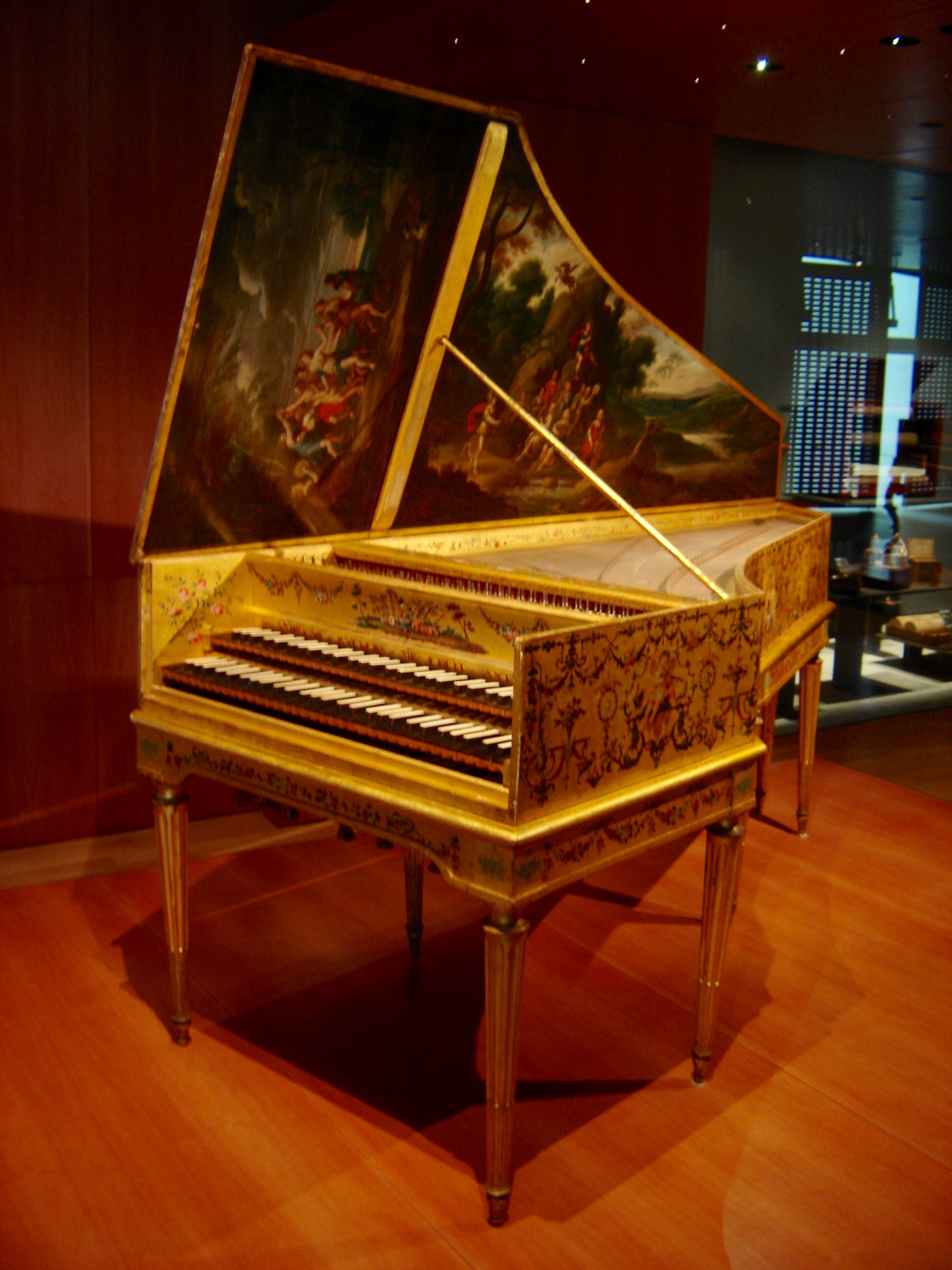The earliest surviving harpsichord that is still preserved comes from Italy. The oldest specimen dates all the way back to the year 1521, in the 16th century. The Royal Academy of Music in London has an instrument of a peculiar upright form, which may be older, but unfortunately, it lacks the ability to operate, unlike the one from 1521.
The harpsichord is an upright instrument and has the ability to play 4-5 octaves and commonly had 59 notes. They averaged about 8 feet in length, and 3 feet in width, and were by far the most advanced and complex string instrument during that period in time. The harpsichord looked like the piano, but the color of the keys is reversed The sharp keys are white, and the flat keys are black.
The function of a harpsichord differs slightly from that of a piano. Like a piano, the inner workings of the instrument contain a wide variety of strings. Unlike the piano, the harpsichord strings are plucked by small hooks, producing a sharper and less appealing sound. But if played correctly, can make very attractive music. Many famous composers played the harpsichord, such as Bach.
Picture of a harpsichord:

Sources: https://docs.google.com/document/d/1IihvSFryxaSK7z1jV7AM__e_byTvfAS7vd1dxZJl0Nk/edit?usp=sharing
Picture of a harpsichord:
Sources: https://docs.google.com/document/d/1IihvSFryxaSK7z1jV7AM__e_byTvfAS7vd1dxZJl0Nk/edit?usp=sharing
No comments:
Post a Comment
Please be respectful. Think to yourself, "Would I say this to a child?"